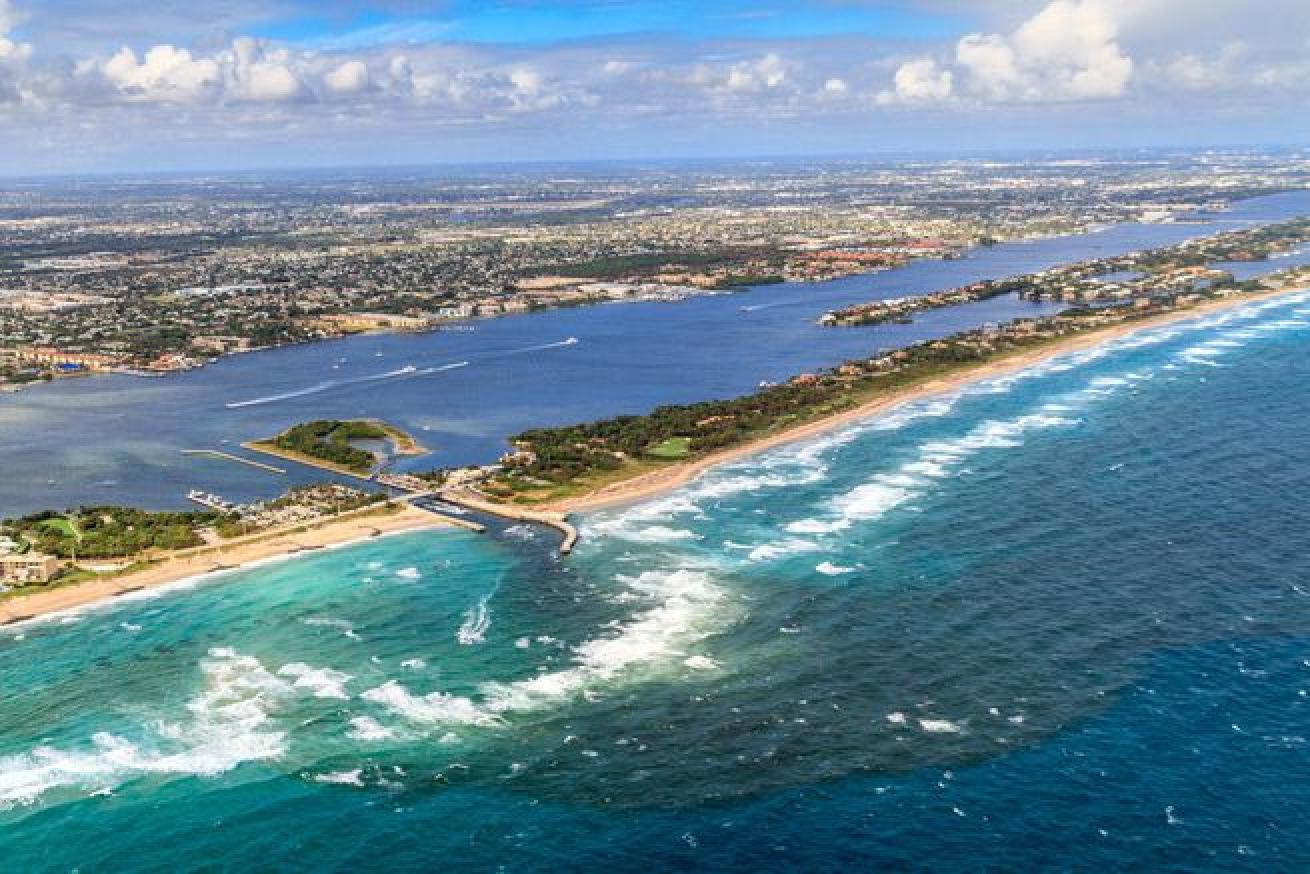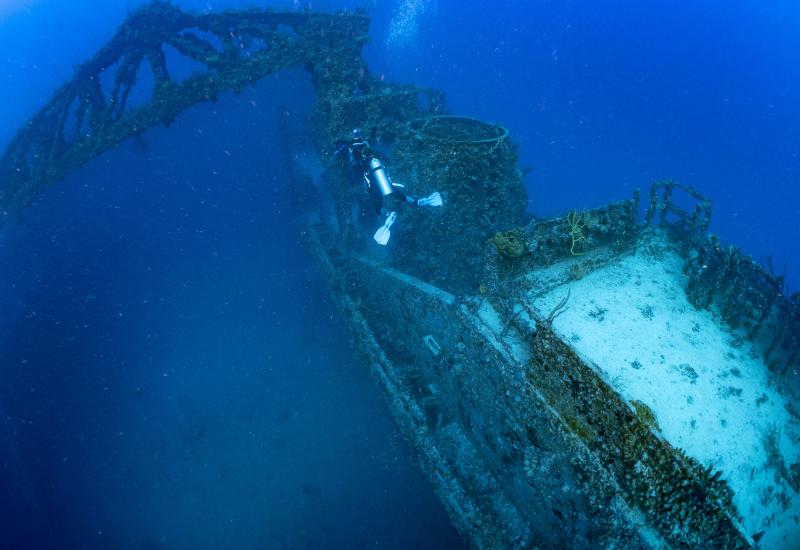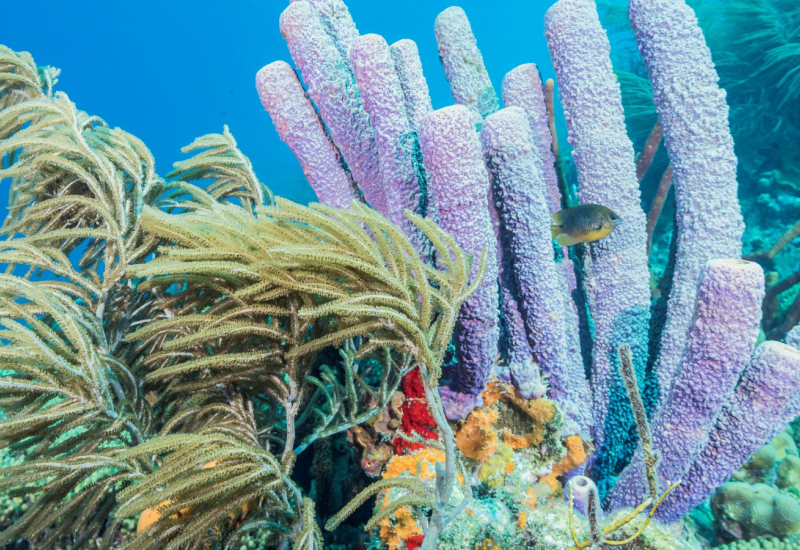Palm Beach, Florida
Anguilla's turquoise waters boast seven marine parks: Dog Island, Prickley Pear, Seal Island Reef System, Little Bay, Sandy Island, Shoal Bay Harbour Reef System and Stoney Bay Marine Park. Dive sites include wreck dives, shore dives, mini wall dives, night dives and heritage diving. Anguilla is known for its intentionally sunk shipwrecks. The island is home to a truly unique attraction, a 960-ton Spanish galleon, El Buen Consejo, that rests on the ocean floor with its cannons and cargo serving as a silent testament to the Caribbean's turbulent past. Anguilla also boasts a healthy double reef system, where a wide variety of corals flourish.
Weather: About 80 degrees year-round.
Average Water Temp: Mid-80Fs in summer in the north, dropping to mid-70Fs in winter. Dive season is year-round.
Average Visibility: 100-plus feet.
Travel Savvy: A passport and onward or return ticket is required. Anguilla is 20 minutes north from French St. Martin by ferry. There are a number of options available for getting to the island. Visitors can fly directly into Anguilla's Wallblake Airport from Puerto Rico via American Eagle/American Airlines and LIAT, or opt to fly directly to St. Maarten, Antigua, St. Thomas or St. Kitts for easy transfer to Anguilla
Destination Links: www.anguilla-vacation.com and www.ahta.ai.

ShutterstockWaterway near Palm Beach, Florida
Known for its ritzy digs — millionaires’ row is worth a Sunday drive for sure, even if you’ll mostly see the privacy hedges of the rich and famous — and for early developer and railroad man Henry Flagler, who put it on the map (The Breakers historic resort is part of his legacy; his winter home, Whitehall, is today an excellent West Palm museum), the Palm Beach area is a mix of opulence and sandy Florida fun.
PALM BEACH AND WEST PALM BEACH The diving around Palm Beach and West Palm Beach is unique compared to the rest of the Sunshine State. There are three parallel reef systems relatively close to shore, with inlets allowing easy access to the county's nearly 70 dive sites. Deep water close to land allows the Gulf Stream to flow closer to shore here than anywhere else on the U.S. East Coast, ensuring excellent water clarity and lots of healthy reef growth. More than 300 species of fish and hundreds of coral and sponge species are found in these waters. On every dive, you'll find teeming schools of fish and chance encounters with big pelagics. Most dives here are drift dives, so you can cover maximum ground with minimal effort. Add a great selection of artificial reefs —including a shore dive at a bridge where the muck diving is compared to Indonesia's Lembeh Strait — and it's no wonder divers frequently return.
POPULAR DIVE SITES Breakers Reef: Named for the famous hotel, founded by Henry Flagler, this site offers a kaleidoscope of colors come to life: blazing orange sponges, purple sea fans, plump gorgonians and robust barrel sponges. A gentle northbound current carries you along an undulating contour 10 to 15 feet above the sand; there’s a staggering density of life here, where schooling grunts and snapper appear at every turn, angelfish swim by in a carnival of color, schools of Atlantic spadefish flash like liquid mercury in the sun, and shimmering clouds of copper sweepers and silversides flow in and out of holes. Undercuts create sanctuaries for nurse sharks and enormous loggerhead turtles.
Juno Ledge: A few miles north of Palm Beach Inlet, a number of dive sites offer "wilderness diving" because of their relative lack of divers and rugged, pristine reefs. One of the best dives is Juno Ledge, about seven miles north of the Inlet, just east of the town of Juno Beach. When the water is as clear blue as a gemstone, you can see the reef 90 feet below. Like many other Palm Beach reefs, the ledge here actually faces west, but unlike most, Juno has up to 20 feet of vertical reef face. Juno also has mini canyons stacked with schooling grunts and snapper hiding from the current. Encounters with green, hawksbill and loggerhead turtles are possible, as well as enormous morays, schools of barracuda and reef sharks on patrol.
Shark Canyon: About 20 minutes north of Palm Beach Inlet, a parallel set of ledges running from 65 to 85 feet creates an unusual reef. The ledges are draped with soft coral flowing in the current, accented by sponges in lavender, burgundy and orange. In the midst of schooling tropicals, jacks and spadefish, a cavalcade of the big fellows glides by. Eagle rays, nurse sharks, reef sharks, goliath grouper and schooling barracuda are all regulars. Turtles are almost a given on just about any Palm Beach dive, but at Shark Canyon extremely rare leatherback turtle encounters have been reported.
The Mizpah: The Mizpah is a 185-foot Greek luxury liner intentionally sunk in 1968 in 90 feet of water, making her a wonderfully mature artificial reef with a well-exposed interior that makes for easy penetration. Orange cup corals and gorgonians abound on her inner structure, while barracuda, jacks, southern rays and the occasional turtle patrol her exterior. Goliath groupers are common, though they can be shy.
PC1170 and the Amaryllis: The PC1170 wreck is a patrol craft of unknown nationality that was scuttled in the 1960s and rests in an area nearly touching the Mizpah's north side. If you follow the northbound current, you soon soar over enormous rock piles teeming with small tropical fish. Stopping here is tempting, but it's better to keep going until you see the 441-foot Amaryllis materialize. This hulking banana freighter, whose nationality is also unknown, sits in the sand at 85 feet and is devoid of superstructure. But she's one huge, open fishbowl where angelfish, wrasse and glassy sweepers carouse and every inch of metal supports life.
Blue Heron Bridge: Just inside the Palm Beach/Lake Worth Inlet -- and a stone's throw away from a parking lot at Phil Foster Park – you can find frogfish in nine feet of water. This locally famous critter site, with diving done in the muck among the bridge's pilings, has been dubbed "the Lembeh Strait of Florida" by underwater photographers. Nudibranchs, urchins, octopuses, flying gurnards, batfish – it takes several dives to see everything here. And don’t forget to look toward the nearby channel: Sharks and eagle rays fly through with the boat traffic.
DIVE CONDITIONS The dive season here is year-round, with water temps varying from the upper 60s in winter to the low 80s in summer, when visibility ranges from 40 to 100 feet. Many divers find a 3mm suit good for all seasons, but you’ll commonly find divers attired in nothing but swim trunks and those in 5 mm fullsuits in chillier seasons.










